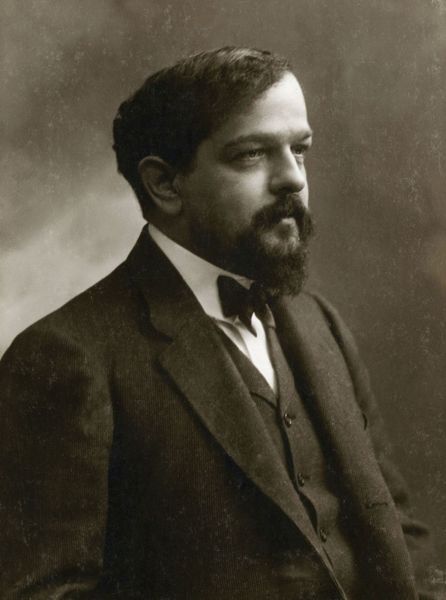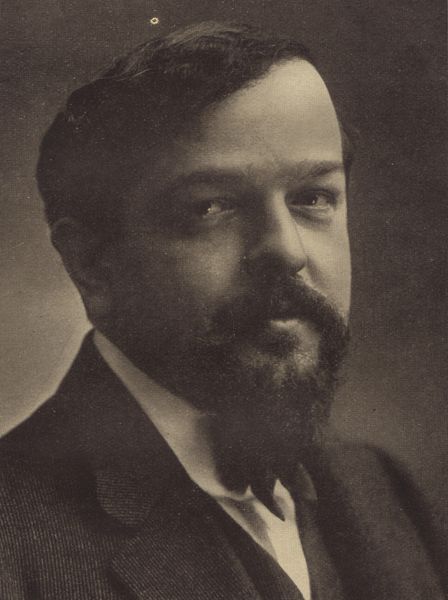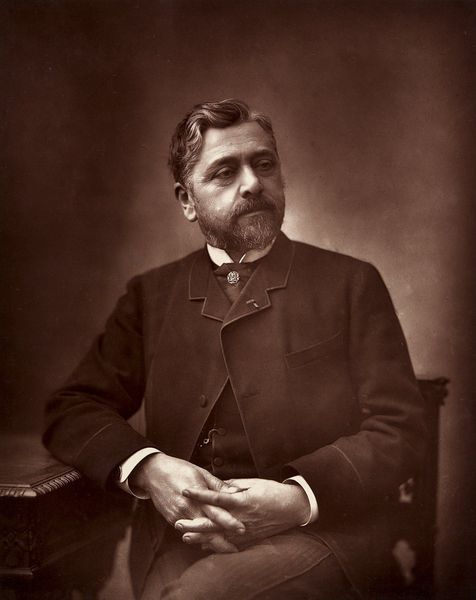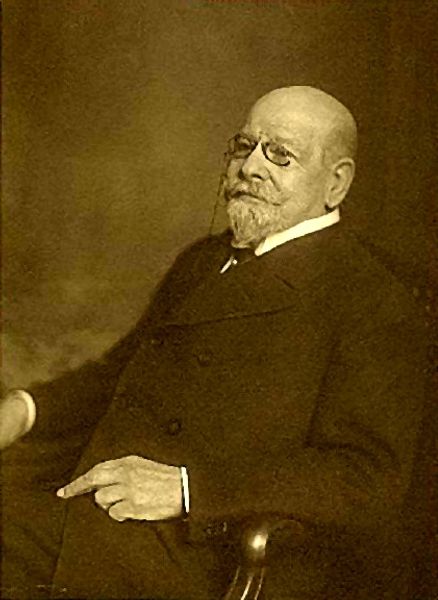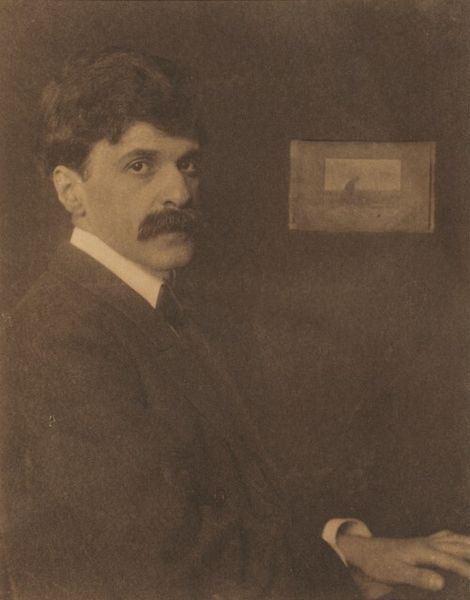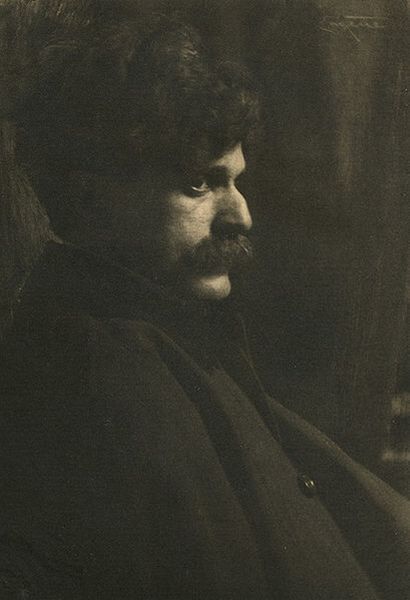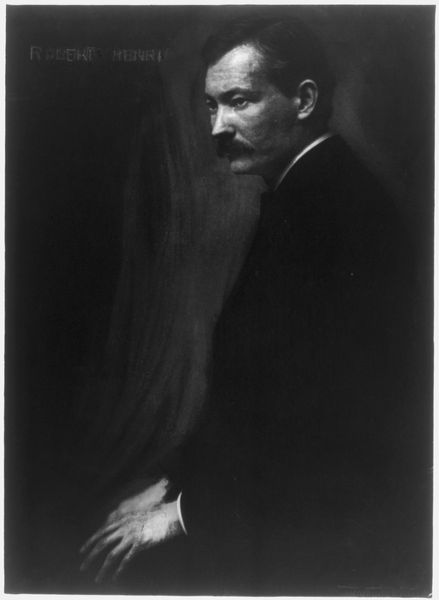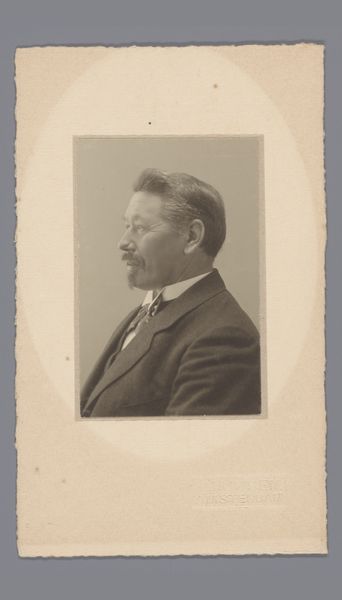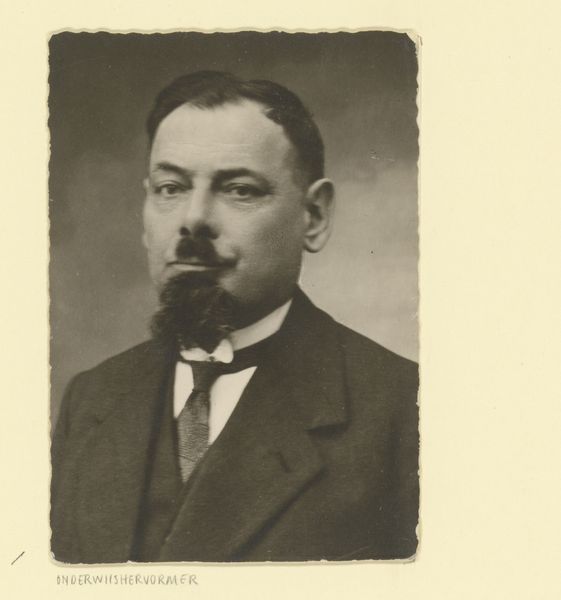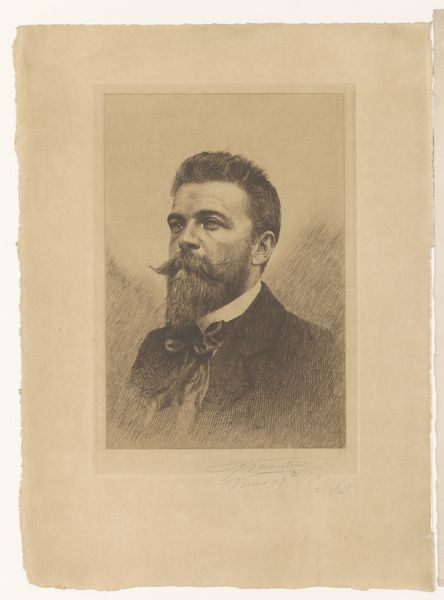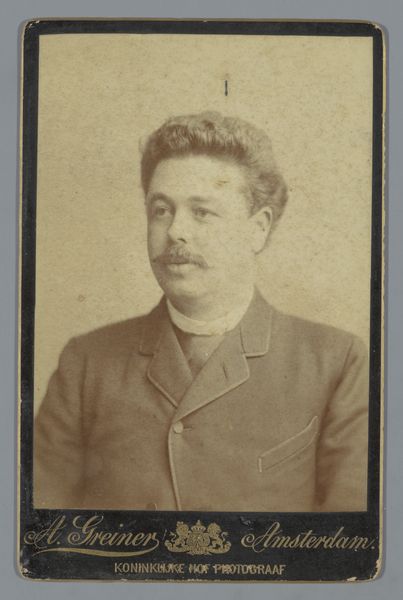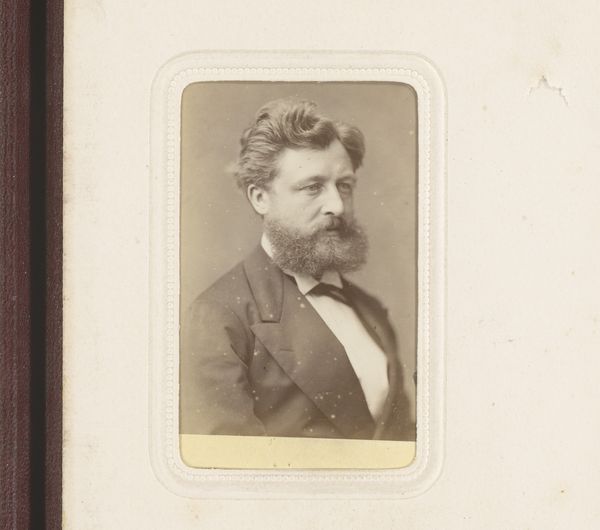
Copyright: Public domain
Editor: This photograph, simply titled "Claude Debussy," was taken by Felix Nadar in 1908. It’s a striking portrait, conveying a sense of Debussy's intellectual intensity. What layers might be invisible to a more casual look at the picture? Curator: Invisible layers, precisely! Beyond a famous face, let’s consider this image through the lens of class and artistic legitimacy. Nadar, though a renowned photographer, operated in a world where photography fought for recognition as high art, comparable to painting. Photographing Debussy, a celebrated composer, wasn't just documenting him; it was an act of elevating photography through association with a pre-established cultural icon. Do you see any tension in that? Editor: I think so. Was Nadar also trying to gain status by photographing Debussy? Curator: Precisely. Photography, especially portraiture, became a tool for constructing and reinforcing bourgeois identity at the turn of the century. The image's formality, Debussy’s suit and bow tie, signifies bourgeois respectability. Think about who was absent from such portraits, who was denied such visual representation and thus, symbolically, cultural capital. It also prompts us to ask how artists like Debussy, though challenging musical norms, still participated in, and were shaped by, existing social hierarchies. Editor: That is powerful. So it’s not just a portrait of a composer, but a document of its time. Curator: Exactly. This photograph reveals complex negotiations around art, identity, and power structures. We gain deeper understanding when we connect art history to social history. Editor: I will think about that more closely when I visit the museum next time. Thank you.
Comments
No comments
Be the first to comment and join the conversation on the ultimate creative platform.
